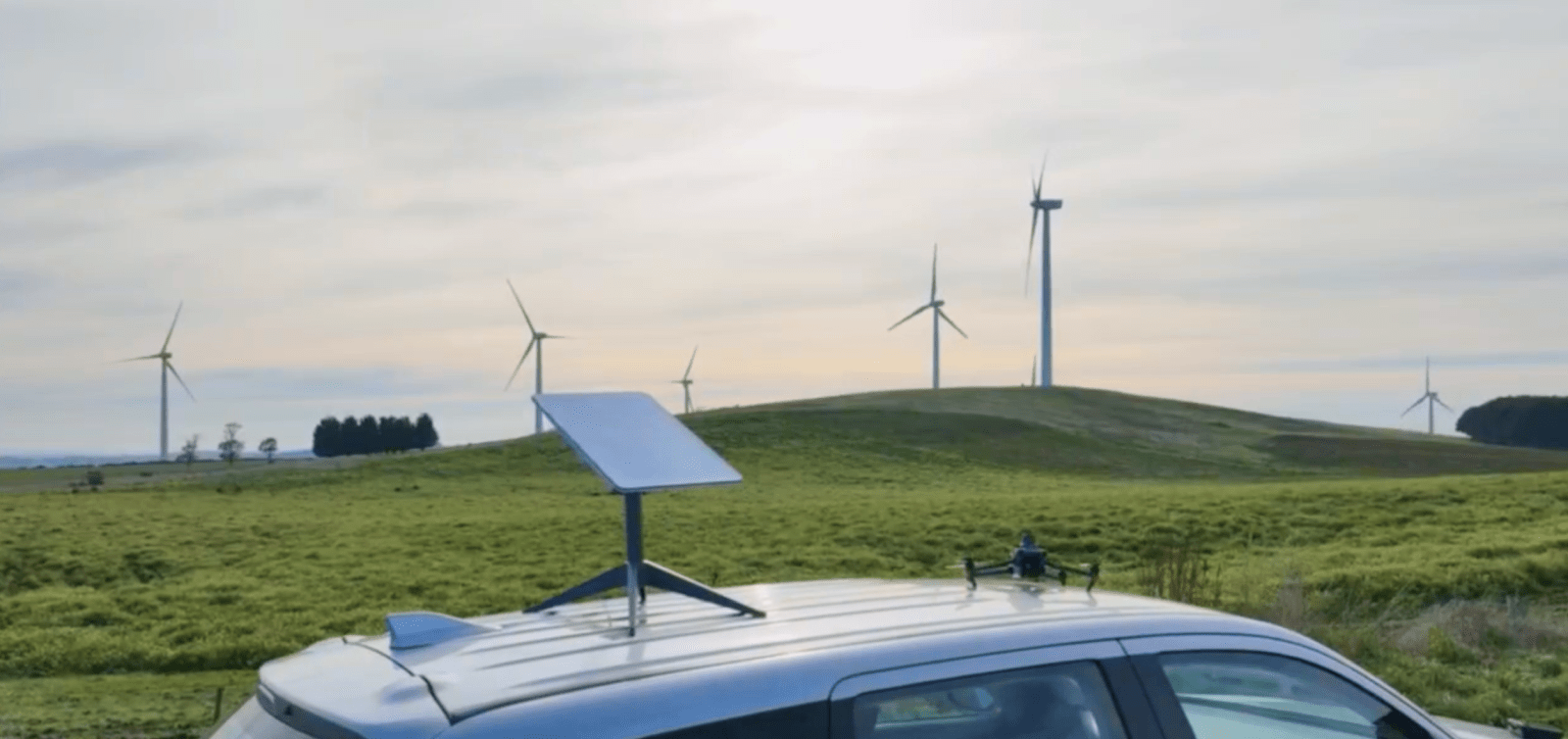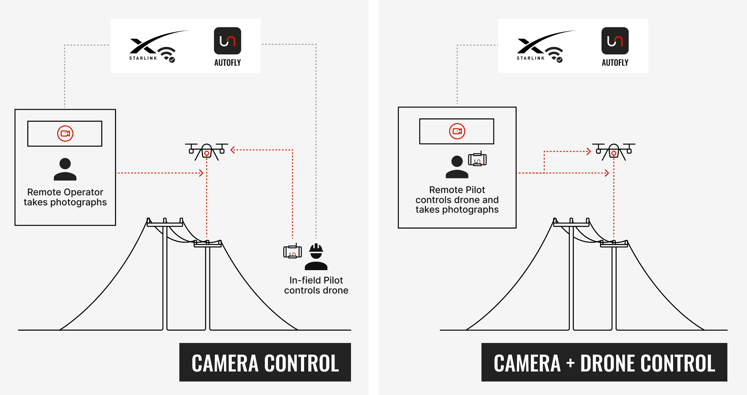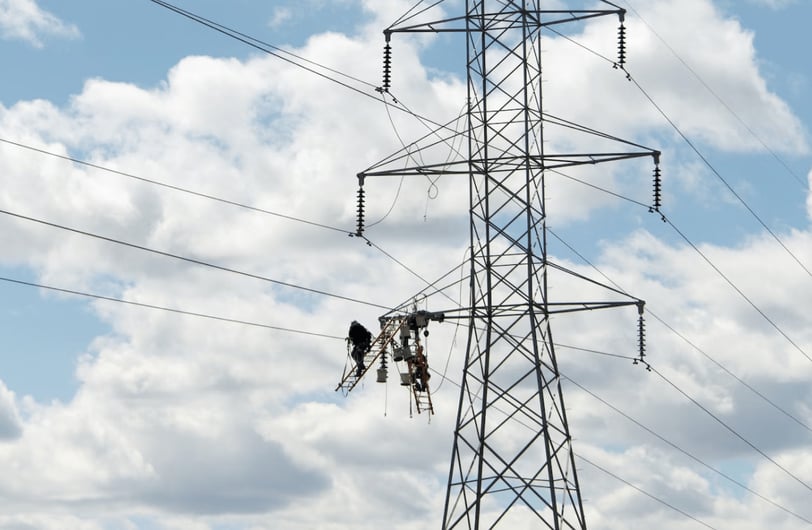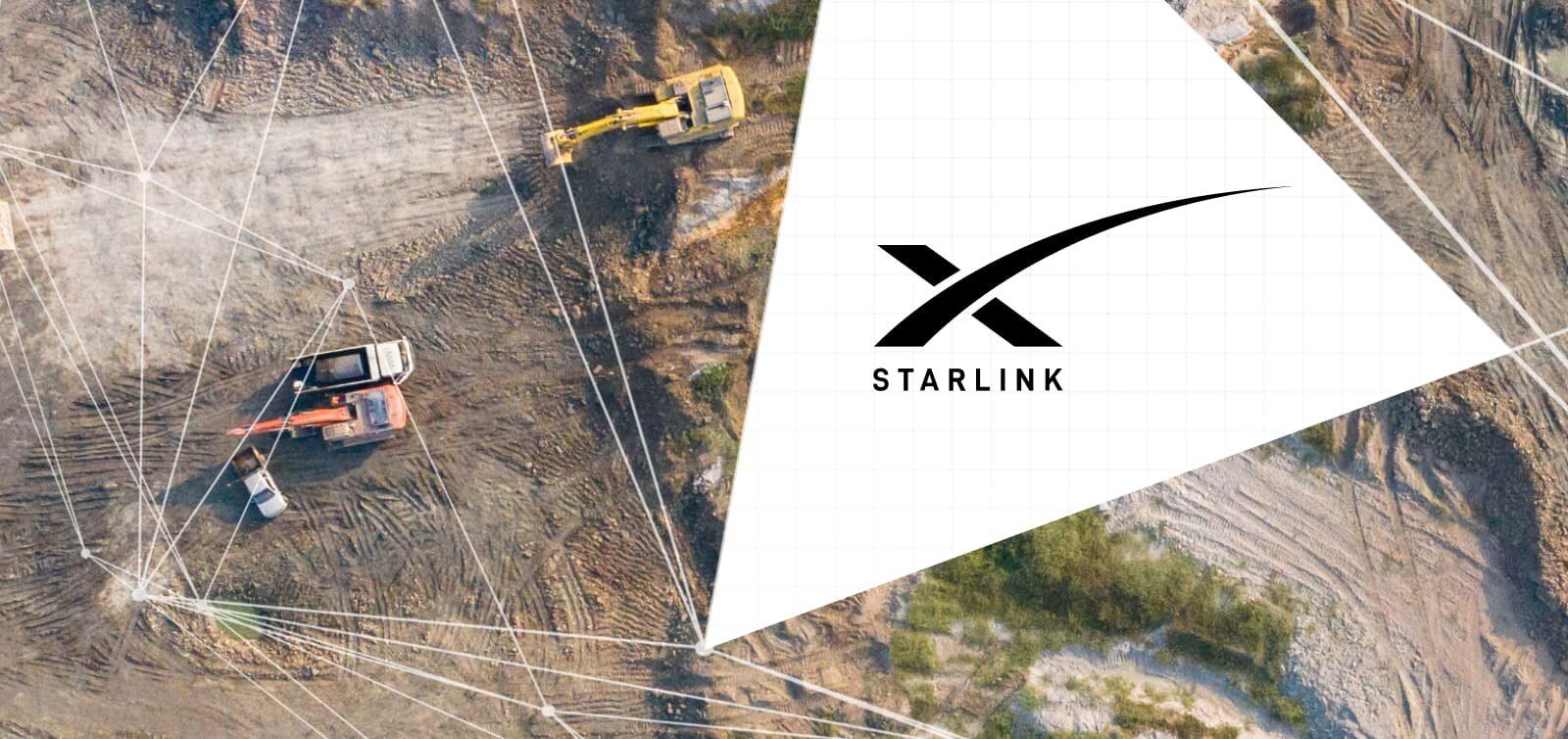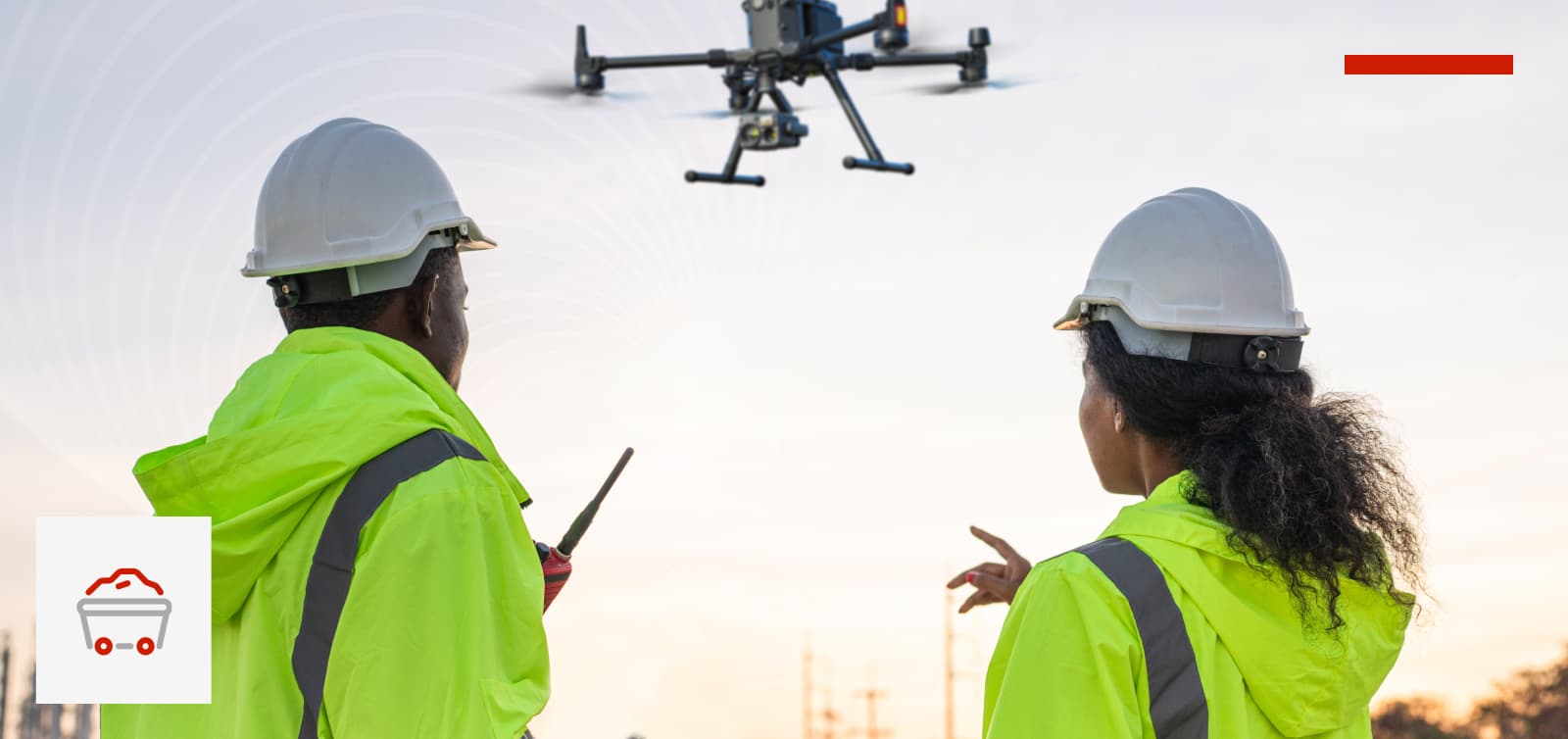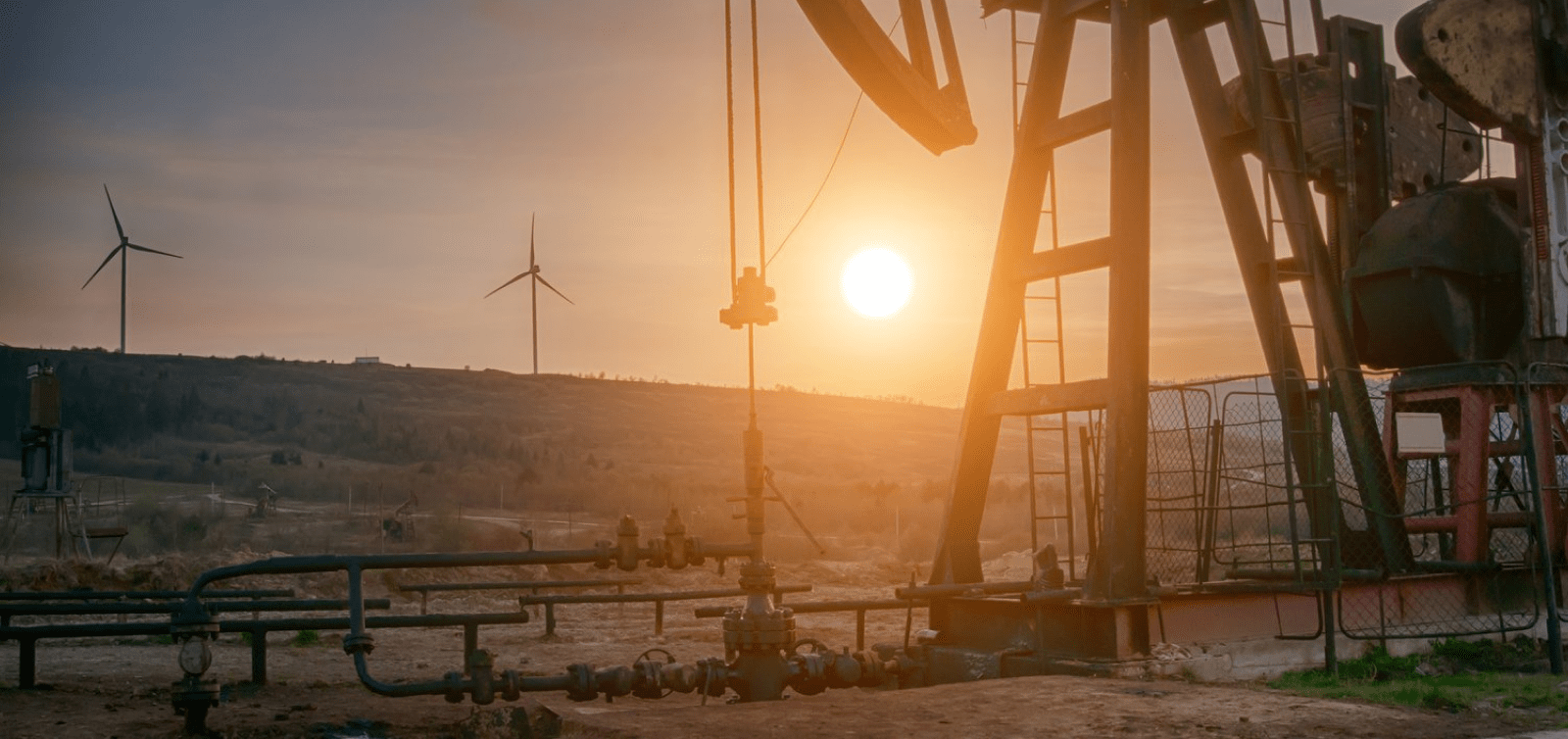By using Unleash live's Autofly software and Starlink's low-latency broadband internet, remote inspections can be conducted easily, quickly, and safely. Learn how this technology can help reduce downtime, improve safety, eliminate data gaps, and increase efficiency. With the right experts involved remotely, conducting remote inspections in even the most remote and hazardous locations is possible.
A remote inspection is a drone inspection conducted with some or all team members located remotely.
Two levels of control can be used in a remote inspection:
-
Camera control. The pilot in the field is in command of the drone, but the camera’s gimbal is controlled remotely from another location, allowing the remote operator to be the photographer.
-
Camera and drone control. The remote pilot (i.e., an operator not located on-site/within a visual line of sight) controls both the drone’s camera and the drone.
For camera control only, the benefit is that a drone pilot can collect data on-site while an SME (subject matter expert)—a power line inspection professional, for example—is located remotely. The SME watches the drone’s live feed, directs the camera’s gimbal, and works with the pilot to ensure they collect all the data needed.
The pilot and the SME can be located off-site for camera and drone control, flying the drone and monitoring its live feed remotely. (In the U.S. and most elsewhere in the world, this kind of control will require special permission to fly beyond visual line of sight, or BVLOS or EVLOS with a spotter on site).
It’s important to note that remote inspections are not only done with drones. Using software like Unleash live, other cameras and data collection devices can be connected in a single platform, allowing inspectors, SMEs, clients, and other stakeholders involved in the inspection to see and respond to inspection data as it’s collected in real-time.
Using Starlink to ensure a strong connection
Remote inspections can be incredibly powerful, allowing companies to include multiple stakeholders regardless of location. But they require special live streaming technology and a strong internet connection to work.
Unleash live addresses the first requirement. To address the second requirement, Unleash live has partnered with Starlink to leverage its network of low-earth-orbiting satellites, allowing inspectors to have unprecedented connectivity, even in very remote areas.
Because Starlink uses satellites for internet connectivity, it can provide high-bandwidth, low-latency broadband internet in far-flung locations where 4G and 5G aren’t available. Combining Starlink and Unleash Live’s Autofly software, we’ve inspected extremely distant and undeveloped areas located hundreds of miles from those conducting the mission.
The unprecedented connectivity Starlink supports is crucial for remote inspections of assets located in remote or even dangerous places, such as power lines, telecom lines, railroad lines, or oil pipelines, all of which can stretch out for hundreds of miles, as well as wind farms that may be located offshore or spread out across vast areas.
Remote inspections, powered by Autofly and Starlink
The 7 benefits of remote inspections
Time is always a big concern for industrial inspections.
For large facilities like power plants, downtime for the plant equals lost revenue. And for third-party service providers, the longer an inspection takes, the fewer inspections they can do, representing a loss in potential income.
Of course, you don’t want to rush an inspection. But when you look broadly at the inspection process, there are several ways that remote inspections can help reduce the time needed without losing any quality in the process.
Here are the different ways time is spent for an inspection, with notes on where remote inspections can help.
-
Time spent planning - automated work order planning and distribution to remote teams
-
Time spent traveling to the site—can be reduced through camera control or eliminated through camera and drone control
-
Time spent collecting data while at the site—can be reduced by including the right experts remotely to ensure proper data collection
-
Time spent analyzing the data and compiling an inspection report - can be reduced by AI-assisted analysis
-
Time spent returning to the site to fill gaps in data—can be eliminated by including the right experts remotely to ensure proper data collection the first time
There are many benefits that remote inspections provide. Here are the top seven benefits companies realize from using Unleash live and Starlink for remote inspections.
1. Speeding up the inspection process
As we just covered, remote inspections can help speed up the inspection process. This is achieved by reducing or eliminating travel time, the time needed to collect data, and eliminating the time needed to return to the site to fill in data gaps.
Power line repairs in action
2. Increased safety
Using a drone to collect inspection data significantly impacts safety since it removes the need for inspectors to place themselves in potentially dangerous scenarios for data collection.
Remote inspections can improve safety further by reducing or eliminating the number of people on the ground, making the entire process safer.
3. Minimal latency
There is often a significant latency when popular sports events such as tennis matches are live-streamed. For example, the U.S. Presidential Debates have had latencies by as much as 90 seconds and viewers of the 2022 Fifa World Cup football games were subjected to a streaming lag of 20 seconds or longer.
But Unleash live’s live streaming technology can connect multiple secure live camera feeds from drones, robots, and IP cameras with virtually zero latency for any viewer globally.
This reduced latency is essential when you’re trying to give a drone pilot in the field input on where to fly for ideal data collection and when you’re flying the drone remotely.
4. No lost data
During a remote inspection, the data inspectors capture is constantly being saved in the cloud in high quality and speed.
In contrast, when an inspector manually collects data by taking photos and videos in the field, they risk losing the data they collect before uploading it to a server or the cloud. With Unleash live, no PC connection or intermediary steps are required, and there’s no chance of lost data because the data is already in a secure cloud account as soon as it’s captured.
5. Including all the stakeholders you need
30% of inspections require re-work. Using live streaming, SMEs can watch the screen of a drone in flight from a remote location and ask the pilot to go back or to get a different angle, ensuring that all the data they need for the inspection gets collected.
Company leaders, maintenance managers, or other stakeholders can also watch the live stream. This allows the live mission to be supported by all the expertise available, regardless of location, and provides transparency for the work as it unfolds.
6. Centralized control
Speaking of including multiple stakeholders, remote inspections also benefit from centralizing inspection activities in a single, cloud-based platform.
Using remote inspection software like Autofly, all the data tied to a single inspection or multiple inspections of the same asset can be saved and shared across multiple teams from the cloud, allowing team members to access, manage, and analyze it.
7. Getting the right data
Participating in each inspection would require an SME days of travel time. But with live streaming, the SME can lend their expertise with no travel delays, placing them exactly where they need to be to ensure correct, comprehensive data collection the first time out. And because the data is pushed directly to the cloud, the SME can review it quickly while the team is on-site, ensuring they collect everything they need before they leave for the day.
Learn how Unleash live can help you get started with remote inspections now.


